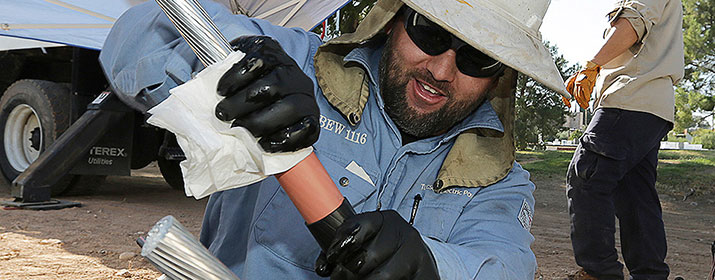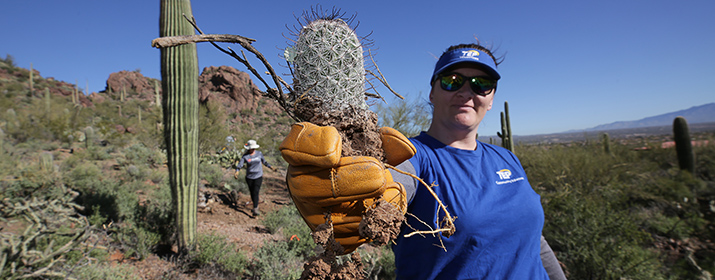
Tucson Electric Power owns and operates more than 1,500 miles of transmission lines and 7,797 miles of distribution lines that deliver electricity to local homes and businesses.
All of TEP’s high-voltage transmission lines – which carry electricity over long distances and between large substations – are installed above ground. But many of the lower-voltage distribution cables are buried underground, often at the request of developers. TEP also buries distribution lines leading out of its high-voltage substations for safety and reliability reasons.
Protected from extreme weather, these underground wires are jacketed and insulated in tubing called conduit, giving them a life span of 30 years or longer. Underground cables may improve the scenery above ground, but they also are much more expensive to install, maintain and repair because of additional labor and higher materials costs.
Just because these cables are out of sight doesn’t mean they’re out of mind.
Each year, TEP invests more than $10 million in preventive maintenance to improve the integrity and overall reliability of its distribution grid. We take a systematic approach to monitoring and evaluating our equipment – above and below ground – that involves crew inspections and the use of technology and statistical analysis.
TEP’s Critical Circuit Patrol plays a big part in monitoring the system. This program schedules circuits, feeder cables and lines for preventative maintenance and repair to avoid potential issues.
TEP also uses 300 remote sensors that detect power interruptions in real-time. Crews also use infrared scanners to check for poor connections.
“While working on jobs, crews regularly examine cables. We also monitor every circuit within our system – especially those circuits that serve a large number of customers and have heavier loads – to determine the necessary upgrades,” said Donovan Sandoval, TEP Engineering Manager.
TEP also employs statistical analysis to assess the condition of underground cables.
“We take various data parameters of the cable, such as age and environmental conditions, and weight them accordingly,” said Clark Bryner, TEP Transmission and Distribution Supervisor. “Then we run the data through an algorithm to see if any segment of the line might be problematic.”
Over the past five years, TEP has increased its overall reliability by reducing the length of power outages. We also consistently rank in the top quartile of utilities nationwide for reliability by the Edison Electric Institute, which represents investor-owned electric companies in the U.S. and Canada.






